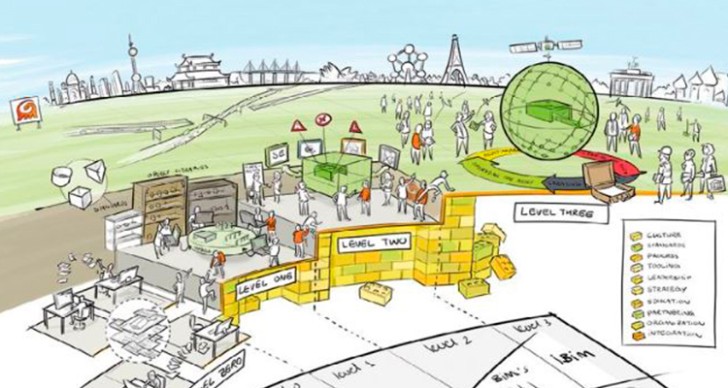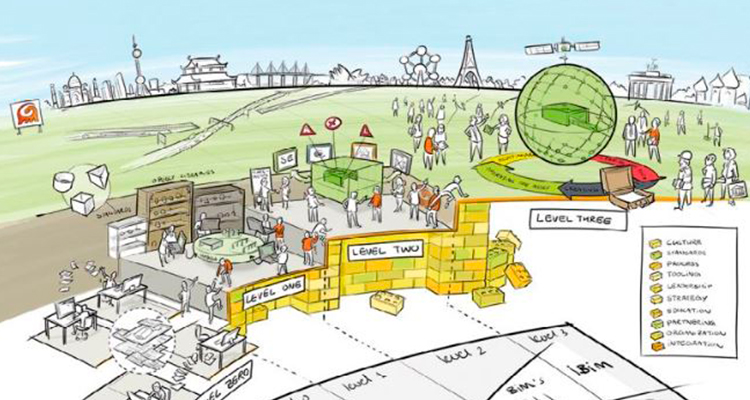David Philp
Blog / BIM & Construction Management
UK BIM Standard: From UK to the World
Categories

In April 2016, a UK government mandate came into effect requiring ‘BIM Level 2’ - the digital collaborative way of working and design technology - for all publicly funded construction projects. Today, we might say that this was probably one of the most decisive moments for Global BIM Implementation and that it was precisely that moment that brought us to January 2019 and the release of a worldwide BIM standard by the ISO.
Forging Path towards Global BIM Standard

Image source: Arcadis
As the construction industry in UK is already thinking and talking about ‘BIM Level 3’, which according to some is what covers the true essence of BIM: database-first, single-source-of-truth design software and processes, the rest of us have our own reasons to celebrate. UK’s trailblazing work on BIM standards became the basis of a worldwide standard created by the International Organization for Standardization (ISO; see ISO Standard 19650) and released in early 2019. That’s why today we listen to a podcast with David Philp, the Academic Co-Director of Master’s in Global BIM Management, director of BIM for the AECOM and seconded into the UK BIM Task Group as Head of BIM. He’s going to share with us his insights to why UK’s government decided for BIM.
UK BIM Standard: the Behind the Scenes of Level 2 Mandate
According to David Philp, the application of ‘Level 2’ was a purpose-driven mission that grew out of the hypothesis the government could drive significant improvements in cost, value and carbon performance through the implementation. What he founds most remarkable, was the behavioral change that government having a construction strategy brought along in UK. While working on it, they also considered the value in terms of alignment of facility managers and operational teams. A few years back it was really common that nobody included facility managers during the procurement time and never consulted them or asked what their requirements were.
UK BIM Standard: the Targets of the Level 2 Mandate
David Philp identifies four main targets the government had in mind with this new strategy: Lower cost by 33%; 50% faster delivery right from the early stages; Reducing greenhouse gases; And improving exports by exporting skills and services. For him, however, the biggest value lies elsewhere. Getting a complete and accurate data set has helped enormously with productivity and efficiency. He also believes that BIM has been a catalyst for building a global community by supporting better collaboration. If you have a clear purpose and use the information available with BIM for that purpose, a better outcome is guaranteed. BIM adoption in Scotland The implementation of the BIM recommendations is being conducted by a collaborative team, comprising of the Scottish Government and Scottish Futures Trust (SFT) where David Philp has exerted as Chair of the BIM Delivery Group. David believes the heavy lifting is done and that in Scotland they “have come a long way in a short time”. For him, it’s not about building fancier modules, it’s about taking advantage of all the assets. Even the smaller Scottish firms are coming along and see it as an opportunity to level the playing field with the bigger players. The results he hopes that the BIM strategy delivers for Scotland include: • Better procurement; • A more efficient and sustainable built environment; • Better places to live; • More intelligent infrastructure – something that is fit for 21st Century Scotland. All in all, he considers that currently, they have world-class standards for information management, soft landings and data delivery. 



